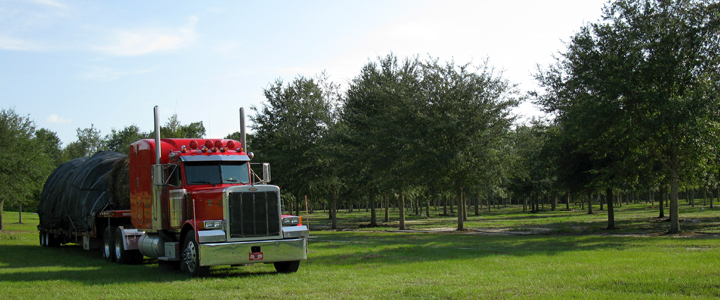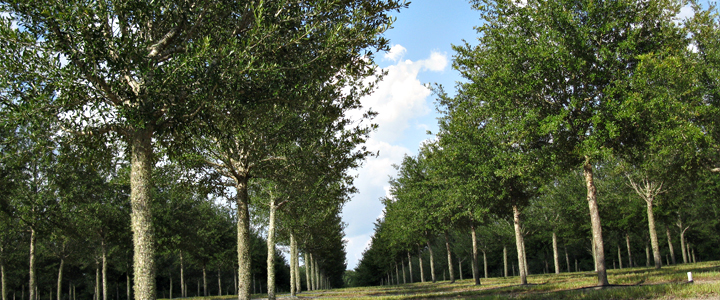A field-grown live oak tree is planted into native soils, grown to a harvestable size, harvested prior to sale and transported to the job site. Field-grown live oak trees are referred to as balled and burlapped (B&B) because the root system is harvested and wrapped in burlap. Live oak trees are placed in wire baskets to support the root system and to make it possible to lift the live oak by the root ball rather than the trunk.
Many studies have been done to compare B&B Live Oak trees with container grown live oak trees after planting. One such study from the University of Florida Horticulture Department (1996) shows how B&B take to a new environment as long as certain root pruning and irrigation procedures are done in the nursery. Live oak trees in our field-grown nursery are maintained with drip irrigation, fertilizer, selective shoot pruning, and root pruning. Root pruning, drip irrigation and fertilizer help build a strong, dense root system, while selective pruning is used to guide the live oak tree into the desired form.
Our field-grown live oak trees are hardened-off or cured after harvesting. This hardening-off process lasts three to four weeks and it simply involves providing the live oak with optimum irrigation during the few weeks after harvesting. This step, as simple as it may seem, is crucial to the health and survivability of the live oak tree.
After the live oak tree is hardened-off it is ready to ship (see our shipping process page) to the landscape site. New roots that have begun to develop are ready to grow immediately into the landscape. These new roots growing outside of the burlap are a sign of quality. Our Quality Root System Guarantee reminds you of the care taken to assure the survival of our live oak trees in your landscape. Look for roots outside of the burlap, our QRS Guarantee assures that you are planting a quality hardened-off live oak tree.

